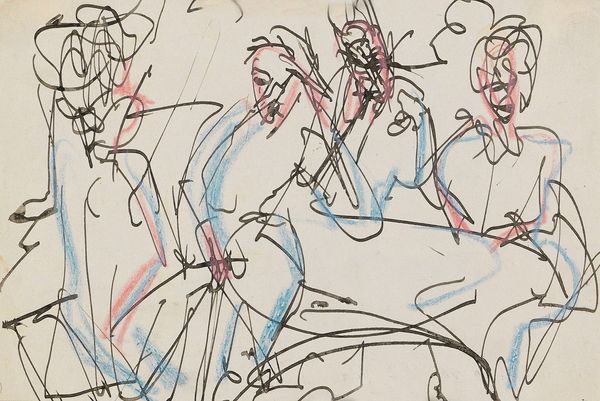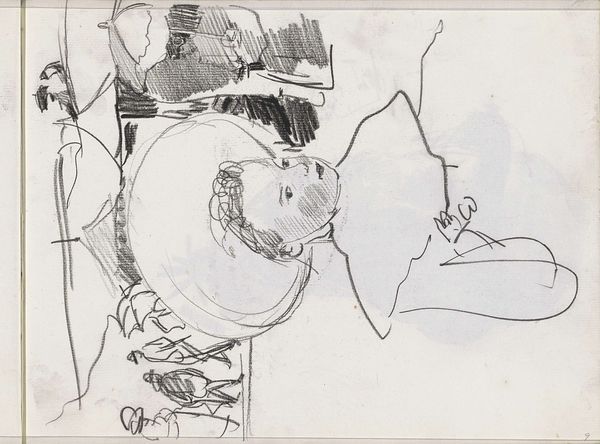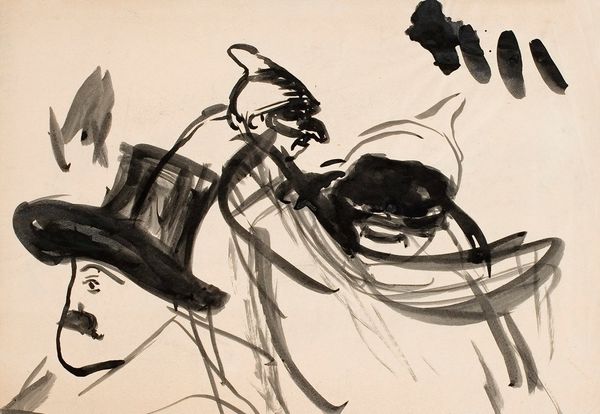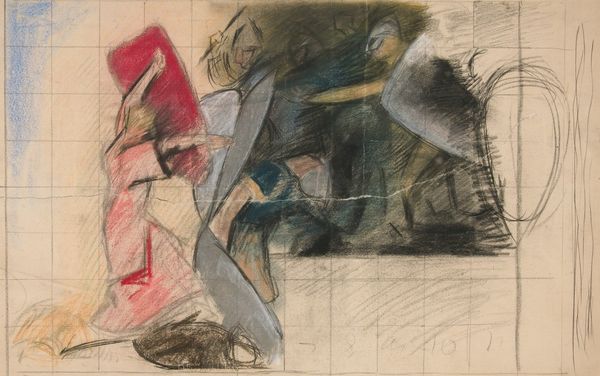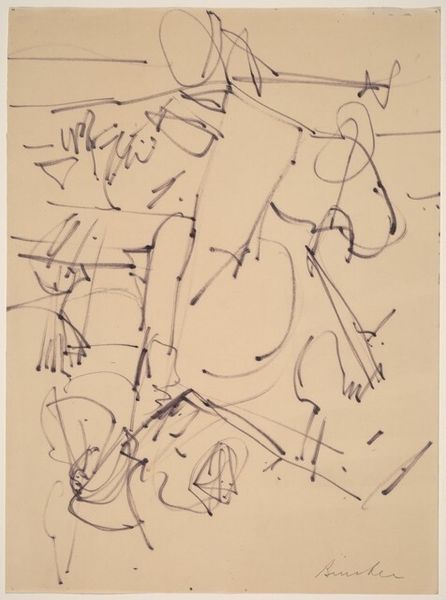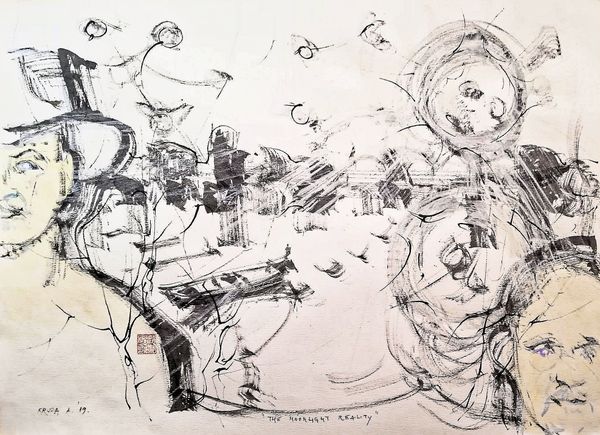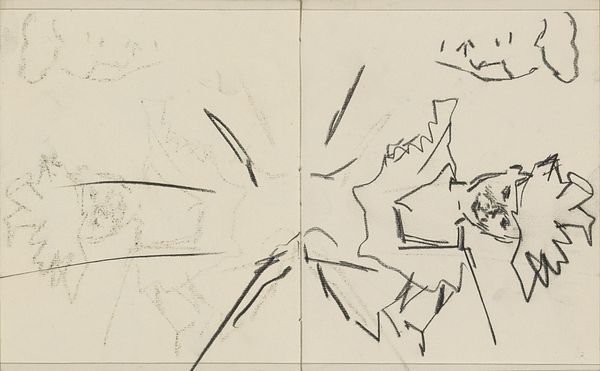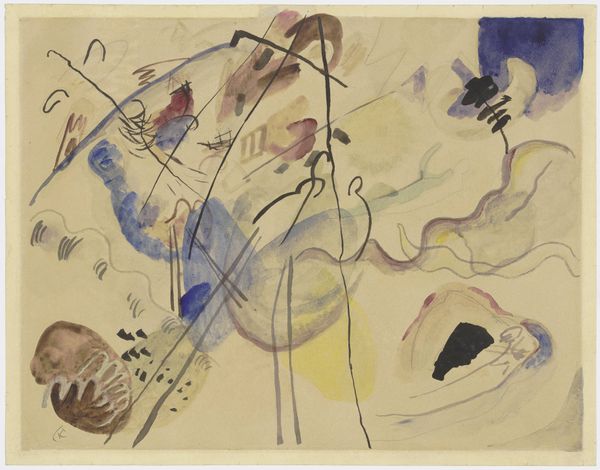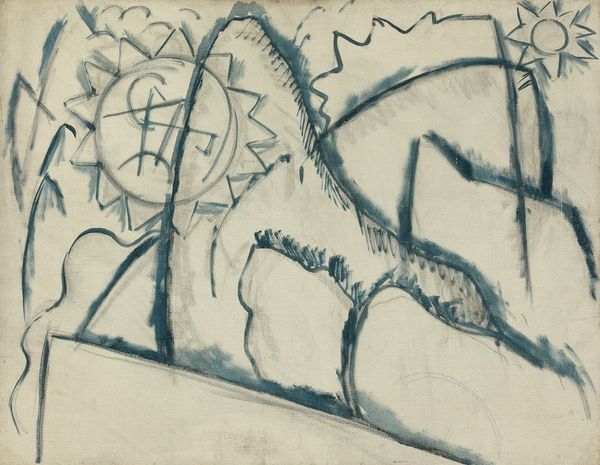
drawing, ink
#
drawing
#
ink
#
expressionism
#
abstraction
#
line
#
modernism
Dimensions: 47 x 63.5 cm
Copyright: Public domain
Editor: This is an untitled ink drawing by Wassily Kandinsky from 1915. It feels almost like a flurry of activity, or the memory of one. What do you see in this piece? Curator: I see a constellation of cultural anxieties and spiritual yearnings rendered in line. Look closely. The swirling, seemingly chaotic composition is not accidental, but deeply considered. Notice how certain forms recur: the angular slashes, the bulbous curves… what do these shapes evoke for you? Editor: I guess, just a sense of… unrest. A kind of beautiful tension. Curator: Precisely. Kandinsky was deeply interested in Theosophy, a movement that sought hidden meanings in symbols. He believed abstract forms could bypass conscious thought and communicate directly to the soul. Doesn't the tension you observe also relate to the cultural context? Europe on the brink of, and then consumed by, the First World War? The breakdown of traditional social structures and artistic conventions? Editor: I see that now – it’s like the end of something. So he's using these abstract shapes to express something beyond words? Curator: Absolutely. Consider also the importance of line itself as a carrier of meaning. A straight line might represent order, a broken line, disruption, a curved line, fluidity. The relationships between these lines, the ways they intersect and diverge, create a visual language brimming with emotional and psychological weight. This is modernism's search for a new iconography for a new era, wouldn't you agree? Editor: That's incredible. I initially just saw abstract shapes but now I'm seeing so much history and symbolism intertwined within each line. Curator: Indeed. It's a powerful reminder that even abstraction can be deeply rooted in the cultural and spiritual landscape of its time.
Comments
No comments
Be the first to comment and join the conversation on the ultimate creative platform.
